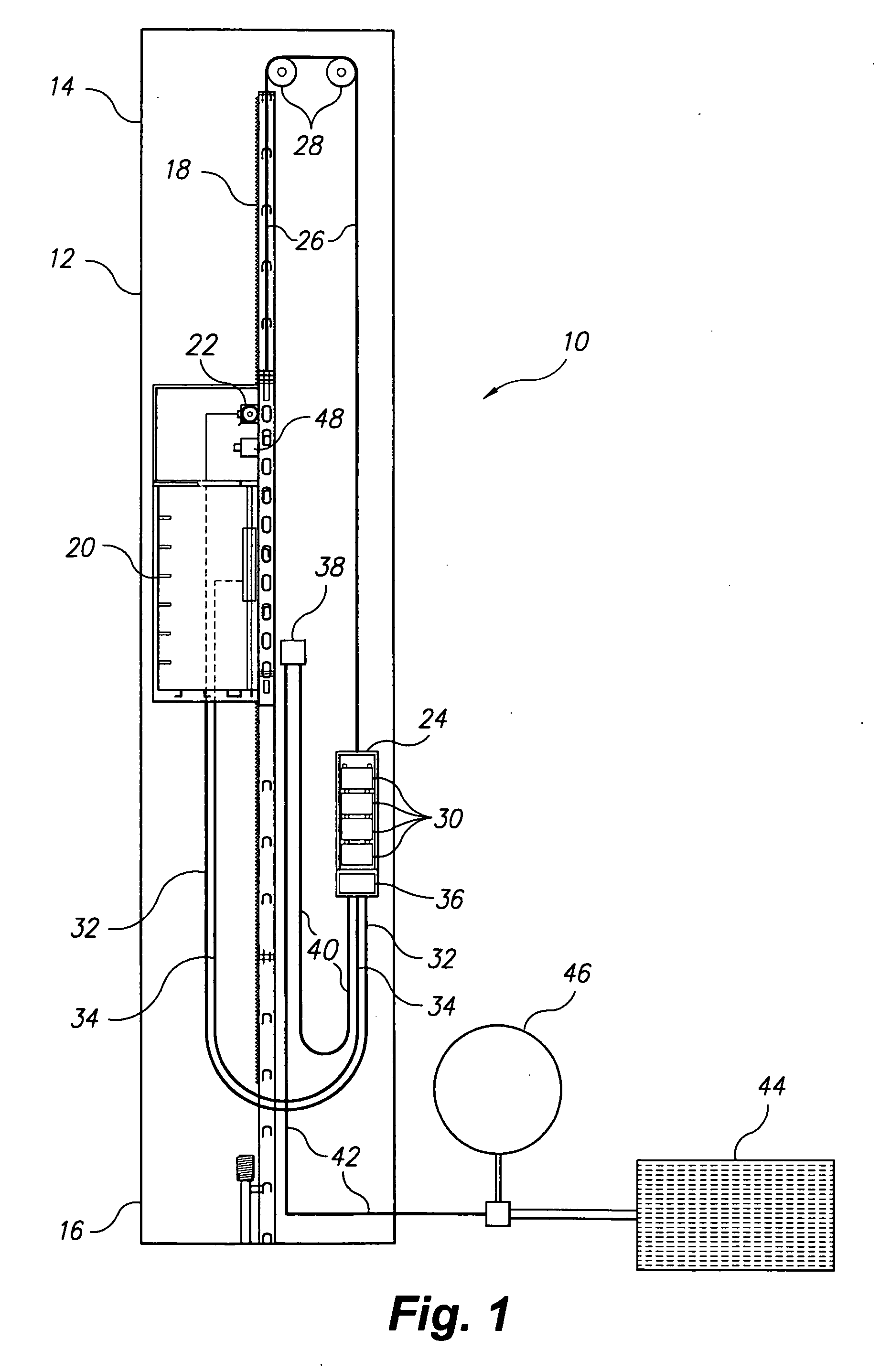Battery counterweighted elevator
a counterweighted, battery technology, applied in the direction of elevators, mine lifts, sustainable buildings, etc., can solve the problems of increasing the power required to drive, and not being able to recover all the power expended in lifting the elevator, so as to reduce the power requirement
- Summary
- Abstract
- Description
- Claims
- Application Information
AI Technical Summary
Benefits of technology
Problems solved by technology
Method used
Image
Examples
Embodiment Construction
[0015]The battery counterweighted elevator comprises different embodiments of an electrically powered elevator using electric storage batteries as the power supply. The batteries are recharged from another electrical source, as needed. The batteries are installed in a counterweight used to offset at least some of the weight of the elevator car and its associated equipment. The battery counterweighted elevator system may be applied to either a rack and pinion or a cable traction elevator operating system.
[0016]FIG. 1 of the drawings provides a schematic illustration of a rack and pinion type elevator system 10 incorporating the battery counterweight. The rack and pinion elevator system 10 has a hoistway 12 with an upper end 14 and opposite lower end 16. The hoistway includes a linear toothed rack 18 extending from the upper end 14 to the lower end 16. An elevator car 20 is installed in the hoistway 12 and travels up and down the hoistway 12, as is conventional in such rack and pinion...
PUM
 Login to View More
Login to View More Abstract
Description
Claims
Application Information
 Login to View More
Login to View More - R&D
- Intellectual Property
- Life Sciences
- Materials
- Tech Scout
- Unparalleled Data Quality
- Higher Quality Content
- 60% Fewer Hallucinations
Browse by: Latest US Patents, China's latest patents, Technical Efficacy Thesaurus, Application Domain, Technology Topic, Popular Technical Reports.
© 2025 PatSnap. All rights reserved.Legal|Privacy policy|Modern Slavery Act Transparency Statement|Sitemap|About US| Contact US: help@patsnap.com



